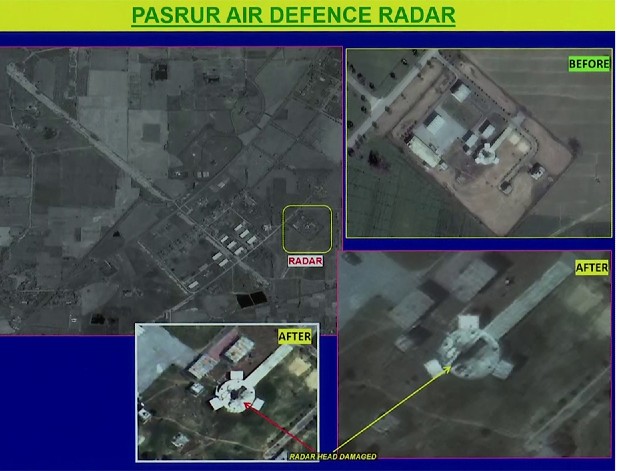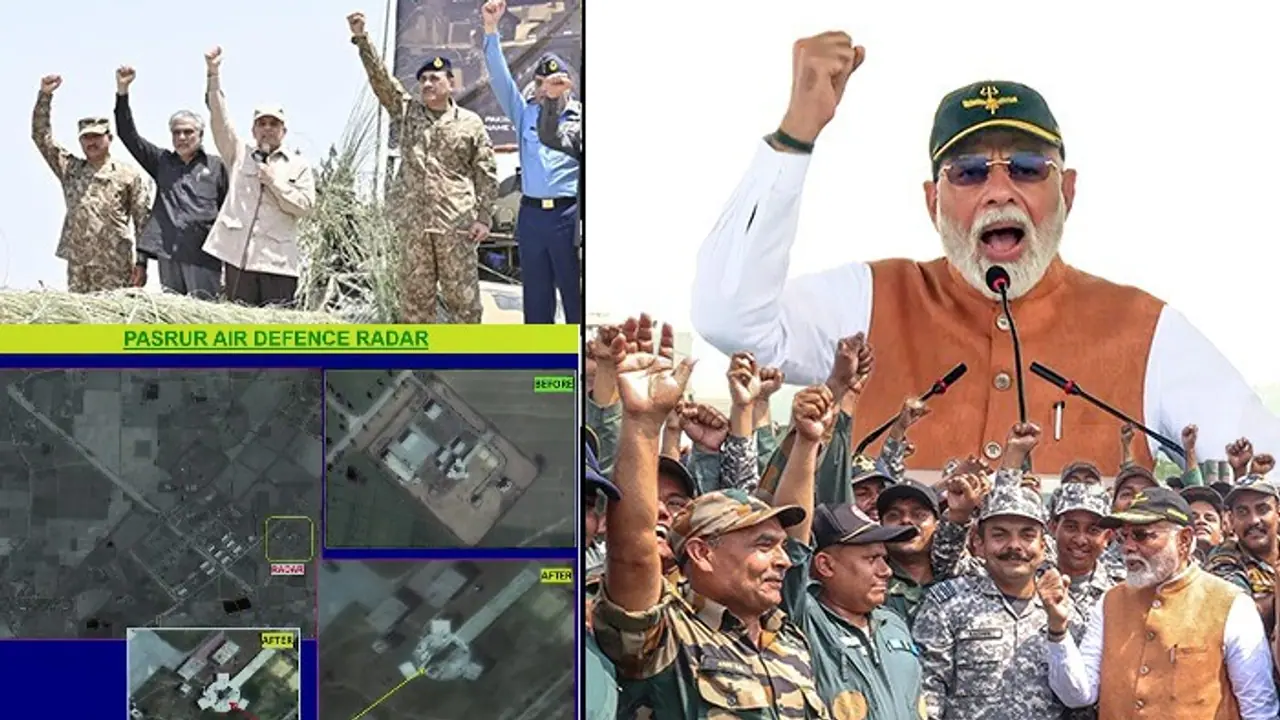Shehbaz Sharif’s failed attempt to mimic PM Modi’s Adampur airbase visit only exposed Pakistan’s damaged airbases and India's decisive military edge.
In what can only be described as a poorly executed imitation of Prime Minister Narendra Modi’s power-packed visit to the Adampur Air Base in Punjab, Pakistan Prime Minister Shehbaz Sharif’s trip to Pasrur cantonment in Sialkot on Wednesday has ended up exposing the devastating impact of Indian airstrikes on Pakistani military infrastructure.

While PM Modi confidently arrived at the fully operational Adampur base on May 13 aboard a Hercules aircraft and delivered a fiery address flanked by the formidable S-400 and MiG-29 fighter jets, Sharif’s visit to Pasrur was riddled with signs of desperation, damage control, and delusion.
No Airstrip Landing, Distant Helicopters: Telltale Signs of Damage
Sharif’s visit to Pasrur on Wednesday appeared to be a carefully choreographed effort to conceal the extent of damage caused by the Indian Air Force during Operation Sindoor, which followed the deadly terror attack in Pahalgam. Observers noted that he addressed Pakistani soldiers from a location well away from the damaged air defence radar, with helicopters seen only at a significant distance — suggesting that landing at the site was not feasible.
Observers also pointed out the absence of any visuals showing the Pakistan PM landing at the airstrip, calling it a clear indication that the site was damaged by India's precision strikes.
The only footage released by Pakistani authorities showed Sharif driving in a jeep, further suggesting the airbase’s airstrip may have been rendered inoperative.

Stage-Managed Optics Fail to Hide Reality
In a bid to put up a brave face, Sharif addressed Pakistani soldiers in what appeared to be a make-believe battlefield setup — standing atop a tank, with a flex sheet in the background depicting war visuals and props that had little or no role to play in the India-Pakistan conflict.
In stark contrast, PM Modi’s address was set against the very real and operational backdrop of India’s defence might. “Humne unke ghar mein ghuske kuchal diya (We entered deep into their home and crushed them),” the Prime Minister said, sending a loud and clear message to Pakistan and the world.
India’s Strikes Decisive, Pakistan’s Lies Exposed
Modi’s presence at Adampur, alongside operational S-400 systems, decisively debunked Pakistan’s earlier propaganda that it had targeted and destroyed the airbase in Punjab. India’s Ministry of Defence confirmed that Adampur faced no damage at all, and PM Modi’s landing there proved that Pakistan’s claims were nothing more than bluster.
Meanwhile, the reality on the Pakistani side tells a different story. Pasrur Cantonment, where Sharif attempted his morale-boosting visit, were among the 11 Pakistani military sites hit in a pre-dawn operation on May 10 by the Indian Air Force. The Indian response came after Pakistan carried out unprovoked drone attacks on civilian and military installations in Jammu and Kashmir, Punjab, and Rajasthan.
The Indian Air Force’s precision air-launched weapons struck key Pakistani airbases including Rafiqui, Murid, Nur Khan, Rahim Yar Khan, Sukkur, Chunian, Pasrur, and Sialkot. The scale of the operation has left Pakistan reeling, with visible signs of destruction at its critical airfields.
Global Validation of India’s Military Success
India’s tactical superiority and accurate targeting have not gone unnoticed. Leading international publications, including The Washington Post and The New York Times, have cited satellite imagery to validate the extensive damage inflicted by Indian airstrikes on Pakistani airbases.
Noted global military experts like Tom Cooper and John Spencer have also confirmed that India scored a comprehensive victory, decimating key Pakistani assets while keeping its own infrastructure intact.
Desperate PR Stunt by Sharif Falls Flat
The presence of Pakistan Army Chief General Syed Asim Munir, Deputy Prime Minister and Foreign Minister Ishaq Dar, Defence Minister Khawaja Asif, and others alongside Sharif at Pasrur seemed more like an attempt to salvage morale than to celebrate military resilience. In reality, their presence only underlined the scale of damage and the government’s desperation to present a false narrative of control.
But the optics couldn’t hide the truth — India’s Operation Sindoor was a surgical and strategic success that not only avenged the Pahalgam terror attack, which killed 26 civilians, but also delivered a humiliating blow to Pakistan’s military credibility.


